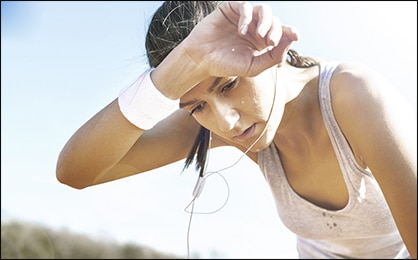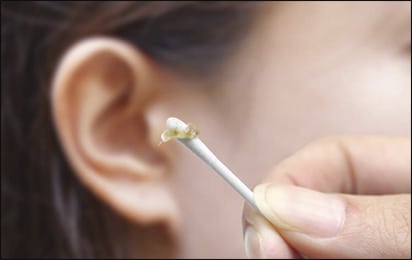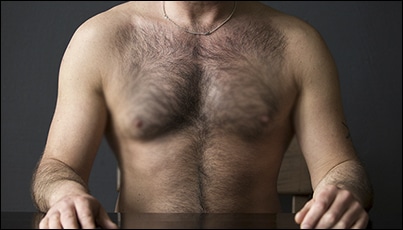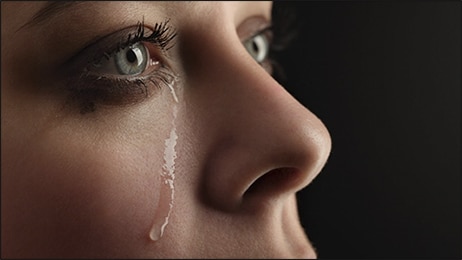Some Interesting and Real Facts of Human Body
Perspiration / Sweating
Perspiration, commonly known as Sweating, helps in the regulation of body temperature and protects it from heat stroke or heat exhaustion. It is a process in which the salt-based fluid gets released from the sweat glands. Sweat gland also known as sudoriferous glands. There are two types of sweat glands in the body that is eccrine and apocrine glands. Eccrine glands are controlled by a sympathetic nervous system and they help in regulating body temperature. Apocrine glands are associated with hair follicles.

Eccrine glands are present all over the body and are responsible for producing light and odorless sweat. These glands are found in a large number on the soles of the feet, palms, face and the apocrine glands are present in the scalp, armpits and groin and produce a heavier sweat with odor. Both glands get activated by the nerves. It can be caused by changes in the body temperature or the emotional state of a person, consumption of spicy foods or caffeinated drinks, due to some diseases, use of certain medications, etc. Sweat is made up of water and around 1% of it is a mix of salt and fat. Normal sweating is one of the essential processes of our body.
Excessive or Zero sweating are both dangerous for a healthy body. No sweating increases the risk of overheating of the body and on the other hand, excessive sweating may lead to psychological damage more than the physical damage. Some other important functions of sweating are, it opens the pores and flushes the toxins and impurities at a higher rate than the kidneys. Sweating for at least one hour a week lowers the blood pressure and regulates the mood by releasing endorphins. It discharges an antibiotic called Dermis iDEN that helps in preventing infection. It boosts up the immune system and also works as a blood purifier. Sweating by exercising daily makes an artificial temporary fever that helps in detoxification of the body and burning out the bacteria before they get a chance to harm the body much. So, be habitual of walking, peddling or exercising so that you can be free from a number of body related problems.
Body Hair
Body Hair or androgenic hair are the terminal hair that develops on the human body during and after puberty. There are two types of hair on a human body, vellus hair and terminal hair. The vellus hair during puberty gets replaced by the terminal hair. The terminal hairs are thicker, longer and darker than the vellus hair. Body hair eases sweating and is helpful in regulating body temperature.

According to a research, the more body hair assures the more intelligence of a human. Body hair on different parts of the body have different functions. Eyebrow hair prevents sweat and water from reaching towards the eyes and keeps them dry. Nose hairs block the gross particle from entering the body through nostrils and reduces the chances of getting sick from time to time. Nostril hairs and eyelashes help in keeping dirt away from the body. When the temperature of the surroundings reduces, the muscles covering the hair follicle makes the hair stand so that more heat can be trapped near the body and this situation is commonly known as Goosebumps. Body hair can also be used as biometric, as they are unique in each and every human. These hairs also work as a defense for our body by protecting it from various problems.
Tears
Tears are made up of water, salt, fatty oils, and around 1500 proteins. They are produced by lacrimal glands positioned above the eyes. Tears spread while we blink and then drain into the small holes in the corner of our lower and upper lids. The tears drain downwards towards the nasal bone and throat. When tears come out in a large amount, they mix up with the nose mucus that is the reason that our nose runs when tears roll down from the eyes. There are three types of tears named as Basal tears, Reflex tears, and Emotional tears respectively. Basal Tears always remain in the eyes and work as a permanent guard to the cornea and keep the dirt away from eyes. They nourish the eyes and keep them lubricated. Reflex tears are those which rolls down the eyes in a need to wash away the harmful particles, such as smoke or onion fumes. These tears contain a larger amount of antibodies that helps in fighting with the harmful bacteria. Emotional Tears contain some additional hormones and present other than those are included in Basal and Reflex Tears, and develop during the changes in the emotional state of a person that makes them feel joy, sadness, fear or any other. They work as a pain reliever and help in the regulation of the body to recover soon to a normal state.

After talking about the types of the tears, we need to know about the layers of a tear. It has three layers called Inner Mucus Layer, Watery Middle Layer, and Outer Oily Layer. All these layers have different functions. Inner Mucus Layer keeps the tear faster and attached to the eye. Watery Middle Layer is the thickest one that keeps the eye hydrated, fights bacteria and protects the cornea. Outer Oily Layer smoothens the surface of the tear to make it transparent, and prevent the other layers from evaporating. Ageing makes the formation of tears slower and results in the formation of dry eyes. Dry Eye can also be caused due to hormonal changes in a person, use of contact lenses, some medications, continuing staring at mobile or computer screens, menopause and many more. Dry eyes can lead to irritation or swelling of the eyelids. Pseudobulbar Affect, a condition when a person cannot control tears, especially occurs due to uncontrollable laughing for a longer period than usual. It happens in the cases of strokes or diseases like Alzheimer and Parkinson. Excess or lack of tears, both are dangerous for a natural human. Tears ensure the smoothness and clarity of eyes. Without them, the risk of eye related injuries or diseases becomes higher. It is also said that tears work as a messenger of feelings to others. Other than the above described functions, tears are the suppliers of oxygen and nutrients to the eyes as no blood vessels can be found on the eye surface. So, it is natural and very important to have tears for healthier eyes.
Ear Wax
Ear Wax is a common name to waxy oil (cerumen) which is produced by the ear canal. It has several functions to keep the ears healthy. The human ears are self-cleaning, the only need to clean them manually is to remove ear wax from the outer ear canal and make it soft. The Ear Wax functions as a filter that protects the ears from dust, dangerous particles in the air, micro-organisms, and irritation due to water and lubricates the ears. Non production of ear wax results in the itchy and dry ears that may result in many ear related diseases. It also has a number of anti-bacterial properties.

It is always said that putting anything inside the ear is a bad and dangerous idea as it increases risk of ear problems such as ear infection, eardrum rupture or hearing loss. Ears are one of the most sensitive parts of a human body, a slight ignorance of its health can lead to a lifetime problem. So, it’s better not to clean your ear canals without a proper method of cleaning, that also only in the case of excess ear wax to avoid blockage of ear canal. It is really important to clean the excess ear wax carefully as the wrong method of cleaning can push it deeper which may cause a blockage in the ear canal resulting in the temporary loss of hearing capacity. In normal cases, ear wax naturally makes it way out of the ear canal and gets washed away.



